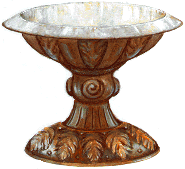
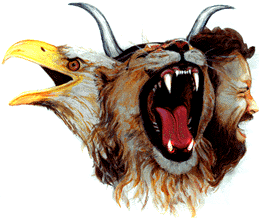
Ps 111:2 The works of the LORD are great, Studied by all who have pleasure in them.
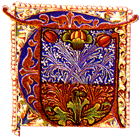 The
Lord's works are definitely awesome and one of the greatest pleasures anyone can
experience is examining them closely. Man's work, the more we examine it, the
more quickly we become bored of it. In time it can be figured out. God's work,
the more we examine and look into it, will only attract us all the more.
Anything in God's creation- the earth, air, the stars, the more we study it, the
more we must admit that we know next to nothing.
The
Lord's works are definitely awesome and one of the greatest pleasures anyone can
experience is examining them closely. Man's work, the more we examine it, the
more quickly we become bored of it. In time it can be figured out. God's work,
the more we examine and look into it, will only attract us all the more.
Anything in God's creation- the earth, air, the stars, the more we study it, the
more we must admit that we know next to nothing.
The tiniest little things reveal God's handiwork. A small insect or a little snowflake reveal amazing artistry. And God's Word, to the very letter, is the handiwork of God. Totally inexhaustible. To look on the surface is one thing, to look into it is another. We can spend a lifetime studying it and just begin to learn of its riches and creativity. Even the most neglected parts reveal the same perfectness. The beauty of the whole Bible and the one great thought revealed through and through is the person and work of Jesus Christ. He is the key to Scripture. He is the one great idea of the Bible. Know Christ, understand God's thoughts about Him, and you'll understand the Bible.
Rom 15:4 For whatever things were written before were written for our learning, that we through the patience and comfort of the Scriptures might have hope.
2 Tim 3:16-17 All Scripture is given by inspiration of God, and is profitable for doctrine, for reproof, for correction, for instruction in righteousness, that the man of God may be complete, thoroughly equipped for every good work.
The types are, in fact, a set of pictures, directly from the hand of God, by which He would teach His children incomprehensible things.
If we know the reality, we can comprehend the representation, and the greater the acquaintance with the reality, the greater will be the ability to understand the picture. I heard it said, "We may explain a little about how an engine works, but the engineer, to whom every nut and bolt are familiar could point out exactly every detail." As we study the tabernacle we will be examining the types and shadows and their significance in relation to Christ and His work. Before we move on lets look at some theology.
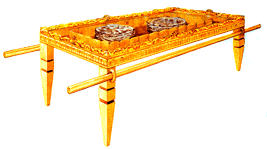
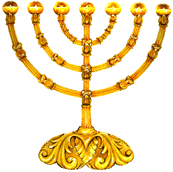
Some Theology
The Tabernacle was a representation and a copy of the true Tabernacle in heaven and a type of Christ.
This brings us to a very important and often misunderstood method of biblical interpretation known as 'typology'. The term is derived from the Greek word 'typos' meaning pattern' or 'figure'. Paul said:
Rom 5:14 Nevertheless death reigned from Adam to Moses, even over those who had not sinned according to the likeness of the transgression of Adam, who is a type of Him who was to come.
Notice it says that Adam was a "type" of Him who was to come. A 'type' can be been defined as:
'an event, person or object which by its very nature and significance prefigures or foreshadows some later event, person or object'.
Types always originate in the real and historical and they are prophetic in nature, pointing forward to some person or event that is to come. They are all directed towards "Mashiach" (Heb. for Messiah). The Jews knew that their Messiah was the "Haba" or "Coming One" and all their prophets spoke of Him. But now looking in hindsight we can see more clearly how each of the figurative types and shadows pointed to the Messiah.
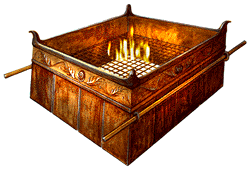
To help us understand what a type is think of the lamb which the Israelite offered as a sacrifice for the sin he had committed:
Lev 4:32 'If he brings a lamb as his sin offering, he shall bring a female without blemish.
Hundreds of years later that lamb could be recognized as being a 'type' of Jesus Christ for it pointed forward to the One whom John the Baptist distinctly identified as, 'the Lamb of God'
John 1:29 The next day John saw Jesus coming toward him, and said, "Behold! The Lamb of God who takes away the sin of the world!
The significance of any type in the Old Testament might not be apparent until the 'antitype' or fulfillment had come. It is important to note that everything in the Old Testament is a type of which something in the New Testament is the antitype. An example of this is Jonah's experience, which Christ used as a 'type' of his own resurrection.
Matt 12:40 "For as Jonah was three days and three nights in the belly of the great fish, so will the Son of Man be three days and three nights in the heart of the earth.
In the case of the Tabernacle and its pattern of approach to God we are on firm ground and in no way reading into the text in regarding it as a type of what is to come. The New Testament book of Hebrews makes this very clear while dealing with the subject of sacrifice:
Heb 9:23-24 Therefore it was necessary that the copies of the things in the heavens should be purified with these, but the heavenly things themselves with better sacrifices than these. For Christ has not entered the holy places made with hands, which are copies of the true, but into heaven itself, now to appear in the presence of God for us;
In this passage the Tabernacle is referred to as 'a copy' of that which came through Messiah. Therefore we have the Tabernacle referred to as 'a copy' (or type) of Jesus Christ, the true sacrifice. Again in Hebrews we are told about the service of the priests on earth:
Heb 8:4-6 For if He were on earth, He would not be a priest, since there are priests who offer the gifts according to the law; who serve the copy and shadow of the heavenly things, as Moses was divinely instructed when he was about to make the tabernacle. For He said, "See that you make all things according to the pattern shown you on the mountain." But now He has obtained a more excellent ministry, inasmuch as He is also Mediator of a better covenant, which was established on better promises.
They serve at a sanctuary that is a copy and shadow of what is in heaven. Note the expression, 'a copy and a shadow.' These words speak about a type of the final reality. In Hebrews 9:9 the writer discusses the actions of the High Priest on the day of atonement in the tabernacle that had to be repeated year after year:
Heb 9:9 It was symbolic for the present time in which both gifts and sacrifices are offered which cannot make him who performed the service perfect in regard to the conscience--
So we have biblical authority for a typological interpretation of this subject which speaks of numerous 'copies, shadows and illustrations' of what is to come.
It is also interesting to note that when John speaks of Christ in the introduction to his gospel he says:
John 1:14 And the Word became flesh and dwelt among us, and we beheld His glory, the glory as of the only begotten of the Father, full of grace and truth.
He uses a Greek verb corresponding to the noun 'tabernacle' so that his statement literally declares 'The Word became flesh and tabernacled (or pitched his tent) among us'.
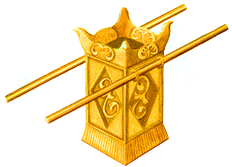
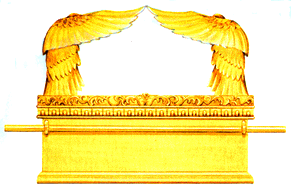
![]()
Read The Bible
- 1599 Geneva Bible (GNV)
- 21st Century King James Version (KJ21)
- American Standard Version (ASV)
- Amplified Bible (AMP)
- Amplified Bible, Classic Edition (AMPC)
- Authorized (King James) Version (AKJV)
- BRG Bible (BRG)
- Christian Standard Bible (CSB)
- Common English Bible (CEB)
- Complete Jewish Bible (CJB)
- Contemporary English Version (CEV)
- Darby Translation (DARBY)
- Disciples’ Literal New Testament (DLNT)
- Douay-Rheims 1899 American Edition (DRA)
- Easy-to-Read Version (ERV)
- English Standard Version (ESV)
- English Standard Version Anglicised (ESVUK)
- Evangelical Heritage Version (EHV)
- Expanded Bible (EXB)
- GOD’S WORD Translation (GW)
- Good News Translation (GNT)
- Holman Christian Standard Bible (HCSB)
- International Children’s Bible (ICB)
- International Standard Version (ISV)
- J.B. Phillips New Testament (PHILLIPS)
- Jubilee Bible 2000 (JUB)
- King James Version (KJV)
- Lexham English Bible (LEB)
- Living Bible (TLB)
- Modern English Version (MEV)
- Mounce Reverse Interlinear New Testament (MOUNCE)
- Names of God Bible (NOG)
- New American Bible (Revised Edition) (NABRE)
- New American Standard Bible (NASB)
- New American Standard Bible 1995 (NASB1995)
- New Catholic Bible (NCB)
- New Century Version (NCV)
- New English Translation (NET)
- New International Reader's Version (NIRV)
- New International Version - UK (NIVUK)
- New International Version (NIV)
- New King James Version (NKJV)
- New Life Version (NLV)
- New Living Translation (NLT)
- New Matthew Bible (NMB)
- New Revised Standard Version (NRSV)
- New Revised Standard Version Catholic Edition (NRSVCE)
- New Revised Standard Version, Anglicised (NRSVA)
- New Revised Standard Version, Anglicised Catholic Edition (NRSVACE)
- New Testament for Everyone (NTE)
- Orthodox Jewish Bible (OJB)
- Revised Geneva Translation (RGT)
- Revised Standard Version (RSV)
- Revised Standard Version Catholic Edition (RSVCE)
- The Message (MSG)
- The Voice (VOICE)
- Tree of Life Version (TLV)
- World English Bible (WEB)
- Worldwide English (New Testament) (WE)
- Wycliffe Bible (WYC)
- Young's Literal Translation (YLT)
Table of Contents
Main Menu
- Ancient Assyrian Social Structure
- Ancient Babylonia
- Ancient Canaan During the Time of Joshua
- Ancient History Timeline
- Ancient Oil Lamps
- Antonia Fortress
- Archaeology of Ancient Assyria
- Assyria and Bible Prophecy
- Augustus Caesar
- Background Bible Study
- Bible
- Biblical Geography
- Fallen Empires - Archaeological Discoveries and the Bible
- First Century Jerusalem
- Glossary of Latin Words
- Herod Agrippa I
- Herod Antipas
- Herod the Great
- Herod's Temple
- High Priest's in New Testament Times
- Jewish Literature in New Testament Times
- Library collection
- Map of David's Kingdom
- Map of the Divided Kingdom - Israel and Judah
- Map of the Ministry of Jesus
- Matthew Henry Bible Commentary
- Messianic Prophecy
- Nero Caesar Emperor
- Online Bible Maps
- Paul's First Missionary Journey
- Paul's Second Missionary Journey
- Paul's Third Missionary Journey
- Pontius Pilate
- Questions About the Ancient World
- Tabernacle of Ancient Israel
- Tax Collectors in New Testament Times
- The Babylonian Captivity
- The Black Obelisk of Shalmaneser
- The Books of the New Testament
- The Court of the Gentiles
- The Court of the Women in the Temple
- The Destruction of Israel
- The Fall of Judah with Map
- The History Of Rome
- The Incredible Bible
- The Jewish Calendar in Ancient Hebrew History
- The Life of Jesus in Chronological Order
- The Life of Jesus in Harmony
- The Names of God
- The New Testament
- The Old Testament
- The Passion of the Christ
- The Pharisees
- The Sacred Year of Israel in New Testament Times
- The Samaritans
- The Scribes
Ancient Questions
- Why Do the Huldah Gates Appear Different in Ancient Replicas and Modern Photos?
- What Is the Origin of the Japanese and Chinese Peoples? A Biblical Perspective
- How did the ancient Greeks and Romans practice medicine and treat illnesses?
- What were the major contributions of ancient Babylon to mathematics and astronomy?
- How did the ancient Persians create and administer their vast empire?
- What were the cultural and artistic achievements of ancient India, particularly during the Gupta Empire?
- How did ancient civilizations like the Incas and Aztecs build their remarkable cities and structures?
- What were the major trade routes and trading practices of the ancient world?
- What was the role of slavery in ancient societies like Rome and Greece?
- How did the ancient Mayans develop their sophisticated calendar system?
Bible Study Questions
- Why Do Christians Celebrate Christmas?
- How Many Chapters Are There in the Bible?
- The Five Key Visions in the New Testament
- The 400-Year Prophecy: Unpacking Genesis 15 and the Journey of a People
- The Authorized (King James) Version (AKJV): Historical Significance, Translation Methodology, and Lasting Impact
- Exploring the English Standard Version (ESV): Its Aspects, Comparisons, Impact on Biblical Studies, and Church Use
- A Detailed Historical Analysis of Language Updates in the KJ21: Comparison with Other Versions
- A Detailed Historical Analysis of the American Standard Version (ASV): Comparison to the King James Version, Influence on Later Translations, and Evaluation of Strengths and Weaknesses
- A Detailed Historical Analysis of Amplifications in the Amplified Bible (AMP) and Its Comparison to Other Bible Translations
- Detailed Historical Analysis of the Amplified Bible Classic Edition (AMPC): Examples of Amplifications and Comparative Analysis with Other Bible Translations
About
Welcome to Free Bible: Unearthing the Past, Illuminating the Present! Step into a world where ancient history and biblical narratives intertwine, inviting you to explore the rich tapestry of human civilization.
Discover the captivating stories of forgotten empires, delve into the customs and cultures of our ancestors, and witness the remarkable findings unearthed by dedicated archaeologists.
Immerse yourself in a treasure trove of knowledge, where the past comes alive and illuminates our understanding of the present.
Join us on this extraordinary journey through time, where curiosity is rewarded and ancient mysteries await your exploration.
Recent posts
-

The Role of AI in Cryptocurrency Trading and Blockchain Security
Artificial Intelligence (AI) is rapidly reworking industries, and the cryptocurrency sector is not any exception. From enhancing trading techniques to... -

The impact of IP address on LinkedIn traffic
IP address has a serious impact on LinkedIn traffic. Before you start working with the site, you should clarify the specifics of this influence and ho... -

The Bible in Museums: Where to See Ancient Scripture Today
The Bible, as one of the most influential books in human history, has shaped not only religious beliefs but also the course of civilization. Its stori... -

How AI is Revolutionizing 2025: Latest Innovations and Industry Applications
Artificial Intelligence (AI) has turn out to be one of the maximum transformative technologies of the twenty first century. As we flow via 2025, AI ke... -

AI-Powered Innovation: How Businesses Are Leveraging AI for Growth
Artificial Intelligence (AI) is no longer a futuristic concept however a fundamental driving force of innovation in these days’s commercial enterpri...